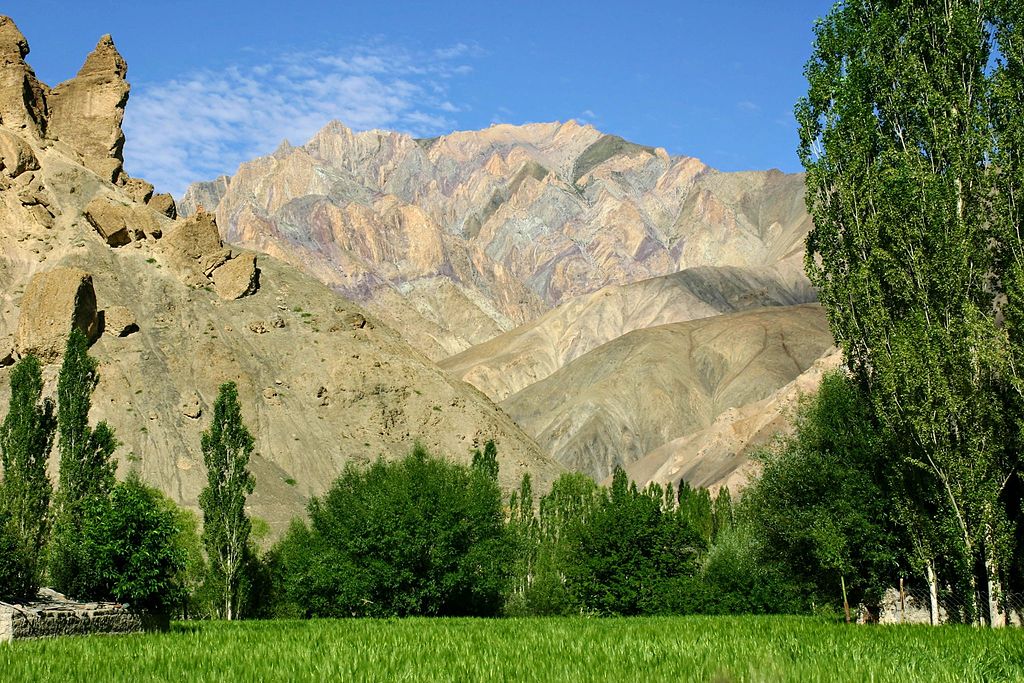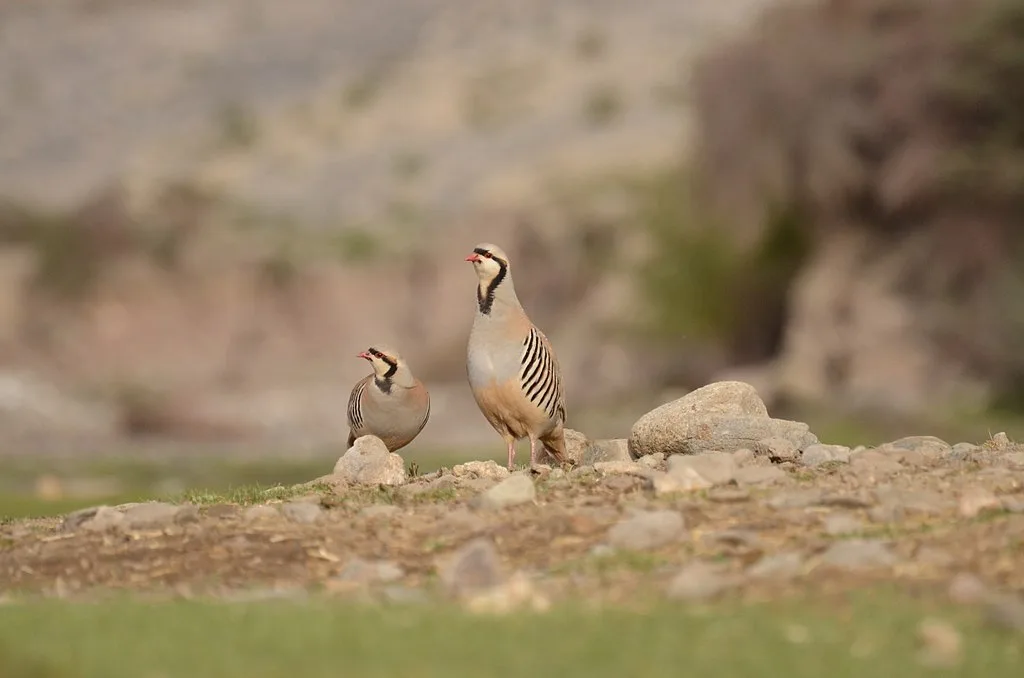Nestled in the lap of the rugged Himalayas, Hemis National Park sprawls over a vast area of 4,400 square kilometers, standing as a testament to the beauty and diversity of nature. This pristine wilderness is a haven for both adventure enthusiasts and wildlife aficionados, offering a unique opportunity to witness the untamed splendor of the natural world.
Unveiling the Jewel: What is Hemis National Park Famous For?
Hemis National Park, located in the Indian state of Jammu and Kashmir, is renowned for being the largest national park in South Asia and a crucial refuge for the elusive snow leopard. This majestic feline, with its dappled coat, finds sanctuary here, hidden amidst the rocky crags and snowy peaks.
But it’s not just the snow leopards that steal the show – the park boasts a rich biodiversity that encompasses a variety of flora and fauna, making it a treasure trove for nature enthusiasts.
A Glimpse into the History of Hemis National Park
Established in 1981, Hemis National Park has a history as captivating as the landscapes it protects. The park is named after the Hemis Monastery, a spiritual haven nestled in the heart of the Himalayas. With its roots in Tibetan Buddhism, the monastery holds a significant place in both religious and cultural contexts. This history of spiritual significance has played a role in fostering a sense of stewardship for the park’s unique ecosystem.
A Botanical Wonderland: Exploring the Flora at the Park

The park’s terrain is a fascinating mix of contrasts. From rocky outcrops that seem impervious to time, to lush valleys that cradle life, Hemis presents a canvas painted with nature’s finest hues. The flora at Hemis National Park is as diverse as it is resilient, showcasing the tenacity of life in even the harshest environments. While the harsh climate limits the vegetation, the flora that thrives here is uniquely adapted to the challenging environment.
Stalwart junipers cling to rocky crevices, their twisted forms standing as silent testaments to nature’s resilience. These ancient sentinels, shaped by the elements, stand witness to the passage of time. Alpine shrubs add dashes of green against the rugged backdrop, their compact forms huddling together for warmth and protection. Amidst the rocks, wildflowers burst forth in a riot of colors during the brief summer months, painting the landscape with their delicate beauty.
Medicinal herbs find their home here as well, serving as a testament to the resourcefulness of nature. Plants like the sea buckthorn and rhubarb root have adapted to the harsh conditions, providing sustenance and remedies for both wildlife and local communities. These flora are not just survivors; they are architects of life in a place where survival is an art.
Wildlife Wonderland: Discovering the Fauna at Hemis National Park

Hemis National Park is more than just a landscape – it’s a tapestry woven with the threads of countless life forms. At its heart is the enigmatic snow leopard, an apex predator that has mastered the art of survival in these harsh climes. The very presence of these elusive cats shapes the ecosystem, keeping herbivore populations in check and ensuring a delicate balance.
However, the park’s residents extend beyond this elusive cat. The Tibetan wolf, a creature as mysterious as the lands it prowls, roams these hills. Agile and resourceful, these wolves have adapted to the high altitudes, preying on Himalayan blue sheep and smaller mammals. Their presence adds an air of mystery to the landscape, a reminder that the wild is full of stories waiting to be uncovered.
With its lumbering grace, the Eurasian brown bear adds a touch of the wild to the landscape. These gentle giants are a symbol of the untamed wilderness, foraging for food and ambling through meadows. Among the smaller denizens are the red fox, its russet fur a flash of color against the monochrome palette, and the Himalayan marmot. This creature embodies the rhythm of the mountains.
The avian residents of the park are equally captivating. The Himalayan griffon vulture, with its impressive wingspan, soars high above, scavenging for carrion and casting its shadow on the rocky slopes. The golden eagle, a master of the skies, rules the upper reaches, its keen eyesight allowing it to spot prey from great distances.
A Safari to Remember: The Hemis National Park Experience
Embarking on a safari through Hemis National Park is an experience that sets it apart from other national parks in India. While many national parks offer wildlife safaris, the uniqueness of Hemis lies in its elusive star, the snow leopard. The thrill of spotting this “gray ghost of the mountains” against the snowy canvas is an unparalleled experience that draws adventurers worldwide.
The park’s guided tours provide invaluable insights into the behaviors and habitats of these captivating creatures. Expert naturalists not only enhance your chances of spotting the park’s elusive residents but also bring to life the intricate web of life that sustains this delicate ecosystem. The safari is not just about spotting wildlife; it’s about being a part of their world, if only for a moment.
How to Reach Hemis National Park
For those eager to explore the park’s wonders, the journey starts by reaching the nearest major city, Leh. Kushok Bakula Rimpochee Airport in Leh is the nearest air gateway, serving as the starting point for your adventure.
If you prefer trains, the closest railway station is Jammu Tawi, acting as a portal from the plains to the mountains. Jammu Tawi station is around 650 km from the gate of Hemis National Park, which involves a travel time of over 14 hours.
From Leh, a road trip of around 5 hours takes you to the heart of Hemis National Park, a journey that winds through breathtaking landscapes and gives you a taste of the grandeur that awaits.
Where Wilderness Meets Comfort: Accommodation at the Park
While the park immerses you in the wilderness, it doesn’t mean you must rough it out entirely. Accommodation options near the park are designed to harmonize with the environment, providing you with comfort that doesn’t compromise the natural setting. From cozy guesthouses that exude warmth to eco-friendly resorts that minimize their footprint, you’ll find your stay to be a blend of modern amenities and a deep connection to nature.
These lodgings also offer opportunities for stargazing, where the canvas above is as awe-inspiring as the landscapes around you, and a chance to engage with local culture, adding an authentic touch to your journey.
Seasons of Splendor: Best Time to Visit Hemis National Park
Timing is crucial when planning a visit to Hemis National Park. The park is closed during the winter months due to heavy snowfall, which blankets the landscape in serene white silence. However, from May to September, it comes alive with diverse flora and fauna. Summer is the best time for wildlife spotting, as animals venture out to forage and bask in the temperate weather. During this period, the park’s trails open up, allowing you to explore its treasures on foot, immersing yourself in the sights, sounds, and scents of the wilderness.
Summers at Hemis National Park offer pleasant temperatures, with daytime highs ranging from 20°C to 30°C (68°F to 86°F). This mild climate creates the perfect backdrop for wildlife exploration and trekking. As the snow melts and the landscape awakens, the park becomes a tapestry of colors and life.
Embracing the Adventure: Things to Do at Hemis National Park
Hemis National Park isn’t just a place to passively observe; it’s an invitation to participate in the dance of nature. Guided treks take you through landscapes that seem untouched by time, each step unveiling a new marvel – a hidden waterfall, a patch of wildflowers, a glimpse of wildlife.
Campsites amidst the wilderness allow you to experience the symphony of nocturnal creatures and the magic of star-studded skies. Engaging with the locals, who have coexisted with the wilderness for generations, offers insights into their way of life and their efforts to preserve the delicate balance of the ecosystem.
Curious Tidbits: Interesting Trivia about Hemis National Park
- The elusive snow leopard, often referred to as the “gray ghost of the mountains,” finds its sanctuary in the park’s rugged terrain, embodying
- Hemis Monastery’s annual festival, Hemis Tsechu, draws pilgrims and tourists alike, adding a spiritual touch to the region’s allure and a deeper layer of cultural experience.
- The park’s unique biodiversity is a result of its location at the crossroads of the Palearctic and Indomalayan biogeographic realms, resulting in a captivating blend of species from different corners of Asia.
In Conclusion
Hemis National Park isn’t just a destination; it’s an immersive journey into the heart of the Himalayas. It’s a place where raw nature thrives, and human explorers can witness its magnificence firsthand. This park is a tapestry woven by time and nature, from the enigmatic snow leopard to the resolute flora and the sweeping landscapes that hold centuries of history.
Embarking on a journey here is not just a vacation; it’s an immersion into the heart of the wild, a chance to glimpse into a world untouched by the hustle and bustle of modern life. So, pack your curiosity, your sense of adventure, and your camera, and get ready to unveil the secrets of the Himalayan wilderness.
